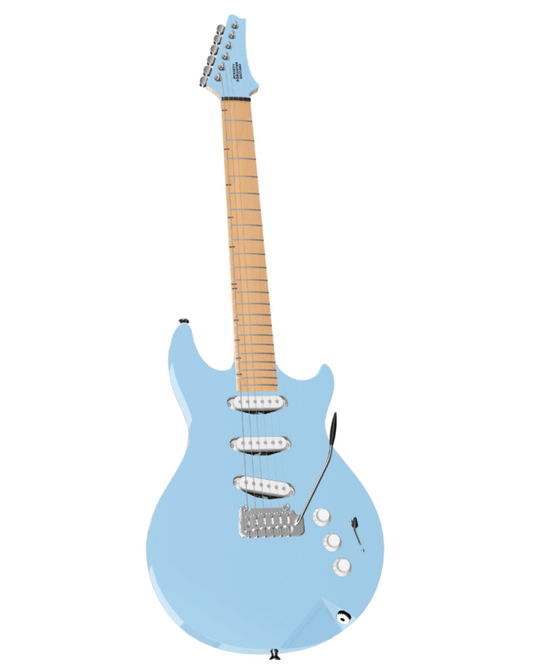When you buy a guitar from us, the pickups are - of course - already wired up and ready to go. But if you're buying our pickups separately to use in another guitar, or you want to switch new pickups into one of our guitars, understanding what color coding we use is vitally important.
The guitar industry is not great at standardizing wiring colors, and while our schema doesn't necessarily match any other manufacturers, we feel like it's the setup that makes most sense and makes your life easiest once you start tinkering.

One universal truth with our wiring is that white = signal and black = ground - always and without exception
This is really important because it means even if you delve no further than this, you should know enough to get started hooking up your guitar.
Strat-style single coils
These are the easiest to understand - the white lead is your hot/signal, and that should go either to your switch or any individual volume/tone control you have for that pickup. The black is ground and that's usually soldered to the back of one of your pots.
- White - hot
- Black - ground
Tele-style single coils & P90s
Now we get a little more complicated, because in addition to the hot and ground wires, there's a shielding wire that connects to the baseplate (in the case of Tele bridge pickups and P90s) or the cover (for Tele neck pickups). The reason we add this third wire is so that you retain the ability to phase reverse the pickup if desired, using a push-pull pot. In that case the black ground and the bare shield wire are not connected together, but wired separately into the push-pull pot.
If you're not doing any phase reverse options, the black and shield are soldered together to the back of a pot, and the white hot lead goes to your switch or any individual volume/tone control you have for that pickup.
- White - hot
- Black - ground
- Bare - shield
Humbuckers
Now we get really complicated. Our humbuckers are all 4-wire to give you maximum flexibility for coil splitting and parallel/series operation.
Our wiring color for humbuckers is:
- Black - South start / ground
- Green - South finish
- Red - North finish
- White - North start / hot
In normal operation, the two coil finishes are hooked up (green and red), north start is your hot (white) and south start is your ground (black).
There's also a shielding wire connected to the baseplate, which is always connected to the black ground, even if you're doing any kind of advanced switching.
If you want to do any advanced switching, just take note of which color corresponds to which end of each coil and translate that to whatever wiring diagram you're working from. We will be publishing some wiring diagrams for common mods that show our humbucker color coding, so stay tuned for that.
But in ordinary operation just solder the red and green together (and insulate with a piece of heat shrink tubing), solder the black and bare wires together to the back of a pot, and hook up the white to either your switch or the input lug of an individual volume/tone control for that pickup.
A note on Molex connectors

Our guitars use Molex connectors because they make the final installation of the controls and pickups much easier and cleaner. Our pickups ship with both sides of the connector so you can install in one of our guitars or any other guitar.
But it's useful to know the pin order for those connectors. In each case, pin 1 is the index pin indicated by the arrow and pins are numbered sequentially away from pin 1.
Strat-style single coils
Pin 1: black (ground)
Pin 2: white (hot)
Tele-style single coils and P90s
Pin 1: black (ground)
Pin 2: white (hot)
Pin 3: bare (shield)
Pin 4: not used
Humbuckers
Pin 1: black & bare (south start & shield)
Pin 2: white (north start)
Pin 3: green (north finish)
Pin 4: red (south finish)




























